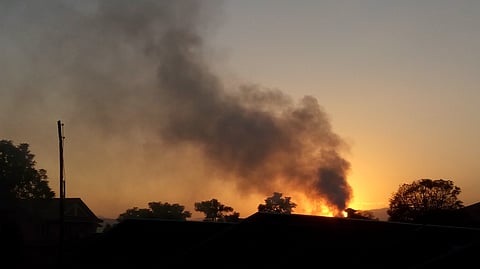Impact on Low- and Middle-Income Countries
The findings revealed significant geographic and socioeconomic inequalities in deaths linked to landscape fire-related air pollution. Low- and middle-income countries, particularly in South Asia, sub-Saharan Africa, and Southeast Asia, bear the highest burdens. India, as one of the affected nations, faces substantial challenges in managing public health impacts caused by air pollution from both natural and human-induced fires.
The authors emphasized that developing countries are particularly vulnerable due to limited access to resources and technology required to mitigate the effects of such pollution.
The Role of Climate Change
The increasing intensity of climate change has exacerbated the frequency and severity of landscape fires. Rising global temperatures and prolonged droughts have created ideal conditions for wildfires, further worsening air quality and public health outcomes. The study warns that without urgent action, the number of deaths linked to fire-related pollution will likely continue to rise.
Recommendations for Mitigation
To reduce the health impacts of air pollution from landscape fires, the authors recommended several key actions:
1. Global Cooperation: High-income countries should provide financial and technological support to help vulnerable nations combat the effects of air pollution.
2. Climate Mitigation Policies: Comprehensive climate strategies are essential to reduce the intensity and frequency of fires.
3. Socioeconomic Interventions: Efforts should be made to address disparities in healthcare access and strengthen public health systems in low-income nations.
The researchers also stressed the importance of integrating climate adaptation policies to better manage the long-term impacts of air pollution on global health.
Future Steps
With data from the Global Fire Emissions Database, the study highlights the pressing need for international collaboration to tackle this public health crisis. By addressing both climate change and socioeconomic disparities, governments and organizations can work toward reducing deaths linked to landscape fire-related air pollution.
Efforts to improve air quality and strengthen healthcare systems in vulnerable regions must be prioritized to save lives and create a healthier future for millions worldwide.
Reference:
1. Baumgart, David C., et al. "Inflammatory Bowel Disease: Trends, Challenges, and Future Perspectives." The Lancet, vol. 404, no. 10503, 2024. Accessed November 29, 2024. https://www.thelancet.com/journals/lancet/article/PIIS0140-6736(24)02251-7/abstract.
(Input from various sources)
(Rehash/Ankur Deka/MSM)


